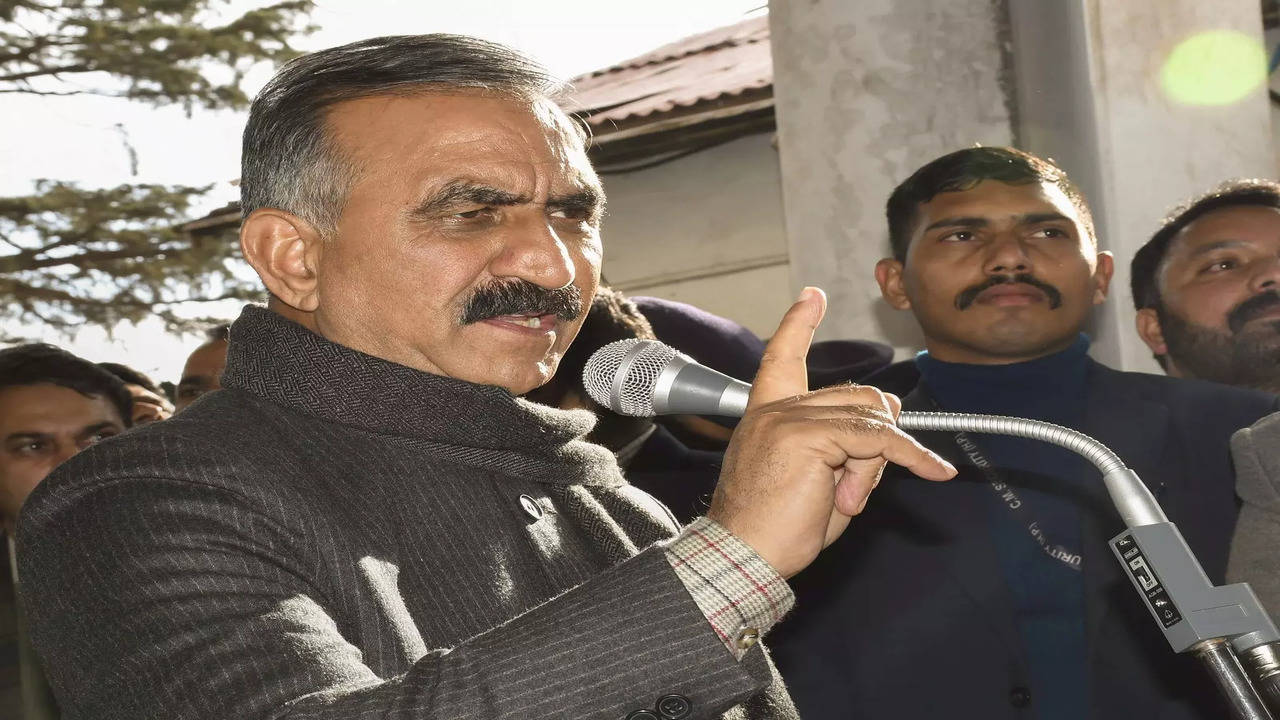

Himachal CM Sukhwinder Singh Sukhu
Shimla: Environmentalists are shocked over the Sukhwinder Singh Sukhu Cabinet’s decision to allow construction activity in most of Shimla’s pristine green belts that have been preserved over the years and showcase the majestic landscape of the British era city.
These 17 earmarked green patches, where tall deodars and cedars thrive, were declared no-construction zones in December 2000 to preserve the natural environment in the ecologically sensitive hill city.
There have also been a series of orders from the National Green tribunal, State High Court as well as the Supreme Court putting an end to new construction in the heritage zone and green belts to prevent Shimla from turning into a concrete jungle.
However, the Congress government with an eye on the vote-bank made promises during the state assembly elections followed by the Shimla Municipal Corporation polls, to allow construction in the green belts despite the disastrous consequences for the environment.
The state Cabinet, which met this week, gave its nod to the draft Shimla Development Plan (SDP)—prepared during the earlier BJP government, just ahead of the assembly polls. The notification allowing construction in the green areas will be issued shortly, a senior official of the Town and Country Planning Confirmed to India Narrative.
The only saving grace left is that the Supreme Court has issued a directive against implementing the SDP document for a month as the next hearing in the case relating to has been fixed for July 12.
The draft SDP called ‘Vision 2041’ also talks about regulating the construction activity in the green belts, spread over 414 hectares.
“Even though the government proposes to allow need-based construction of one floor and an attic, yet the move to allow construction in the green belts, considered lungs of the town, is cause for grave concern,” said a senior environmentalist, who has been vociferous on saving Shimla forests for the future generations.
The Congress government, which has recently won Shimla Municipal Corporation with a massive majority, had allowed attic space to be used for inhabitation and even commercial activity a few days before the poll. Apparently, there is a promise to the voters to throw open green belts for construction, where several high-profile people had bought plots for new buildings.
Initially the government had mulled giving compensation to the people who owned the ‘sandwiched” plots but the view has changed to give the go ahead for construction.
In May 2015, the NGT had restrained the state government against throwing open the green belts for construction while passing orders on a petition filed by a noted environmentalist, Yogender Mohan Sengupta.
Sengupta, who continues to wage a battle to save whatever little is left of the town, is vehemently opposed to opening green belts for construction.
But around 60 representatives of the plot owners in the green belts also started strong lobbying to allow them need-based construction on their plots bought before the ban was imposed in 2000.
But there are strong fears that any sort of relaxation will open the flood gates to construction activity in the green belts, which till now remain protected areas thus saving Shimla’s environment and ecology.
There are already thousands of illegal and unauthorised constructions in the town, now converted into a concrete jungle resulting in landslides, falling of trees and sinking of several parts of Shimla including the iconic Ridge. Shimla also falls under seismic zone IV and V and recent happenings in Joshimath had raised fresh concerns about the future of the Himachal capital and its burgeoning population.
As per studies of urban planners, Shimla has already exceeded its carrying capacity and further construction will make the town go downhill.
Ironically, the decision of the state government comes at a time when Chief Minister Sukhwinder Singh Sukhu has outlined the government’s plan to develop Himachal Pradesh as a green energy state. The government has no plan for decongestion of Shimla, which was established by the Britishers as the summer capital of India with a population of 30,000. The population has already crossed three lakhs.
Cyprus President Nikos Christodoulides said he and Prime Minister Narendra Modi discussed expanding bilateral ties…
Prime Minister Narendra Modi said on Monday that India and Cyprus will develop a strong…
The European Union and China conducted the 40th iteration of their Human Rights Dialogue on…
Prime Minister Narendra Modi was awarded the Grand Cross of the Order of Makarios III…
External Affairs Minister S Jaishankar held a telephonic conversation with his UAE counterpart Sheikh Abdullah…
India continues to maintain an edge over Pakistan in nuclear capabilities, with the Stockholm International…